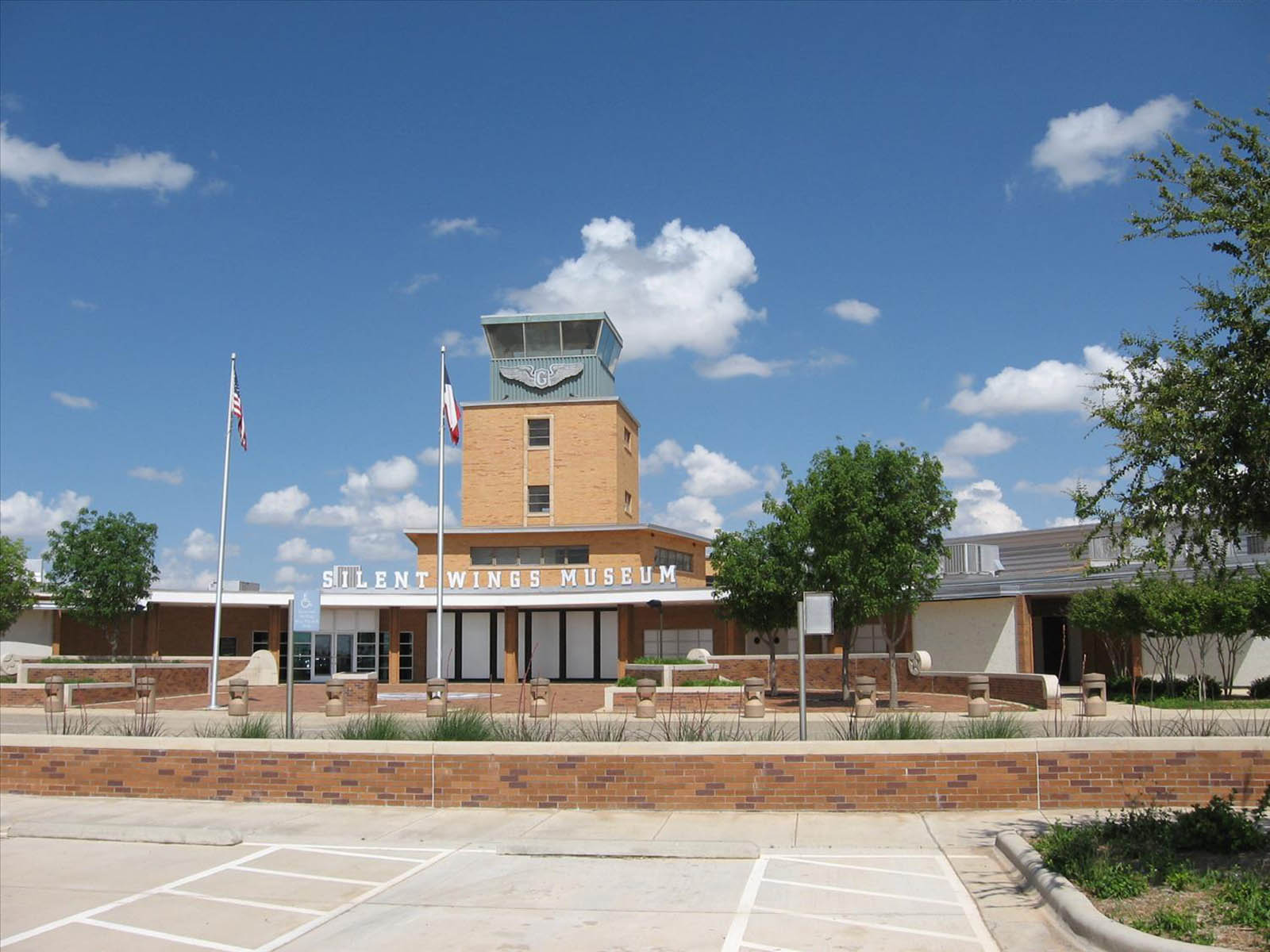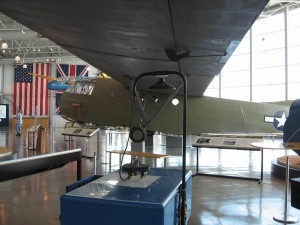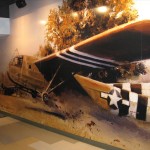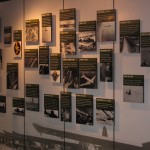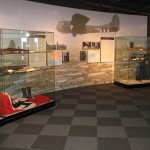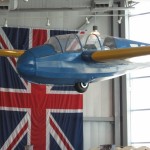By Jim Stanley
During WWII, thousands of brave American soldiers flew into enemy territory with no hope of survival, except through victory or rescue. Comparatively small in number, but strategically vitally important, these warriors arrived by one-way glider flights or parachute drops, usually in advance of the main invasion forces.
The Silent Wings Museum, a small museum in Lubbock, Texas, tells the story of American glider operations in Europe during the war. There are currently more than 1,200 museum members, including the members of the National World War II Glider Pilots Association.
“Our mission is to preserve the history of the World War II military glider program,” states Shelly Crittendon, special projects coordinator. “We try to create an ideal environment for collecting and documenting artifacts from that time.”
The American Waco CG-4A
In 1984, the National WWII Glider Pilots Association established a small museum in Terrell, Texas, one of the training facilities for the glider pilots of the Army Air Forces. A sister group, the Military Glider Pilots Association, operated the museum. In 2000, after a long search for a suitable location, the association transferred ownership of the 9,000 artifacts and a restored Waco CG-4A glider to the city of Lubbock. Lubbock’s director of aviation sponsored the renovation of the old terminal building at Lubbock Preston Smith International Airport (LBB) to house the MGPA collection.
Lubbock Municipal Airfield began operations in 1929. The U.S. government took over the airport in 1942, creating the South Plains Army Airfield. Most of the American WWII glider pilots (about 4,800 out of 6,000) graduated from this facility.
The centerpiece of the museum is the restored Waco CG-4A, designed by the Weaver Aircraft Company of Troy, Ohio. This glider was a mainstay of American airborne forces during the war in Europe. First delivered in April 1942, 16 U.S. manufacturers built more than 13,900 gliders, with the largest supplier being the Ford Motor Company in Kingsford, Mich.
By February 1944, 2,100 crated CG-4As had arrived in England. Untrained labor made assembly tedious, resulting in only 910 gliders assembled in time for the D-Day invasion on June 6, 1944. Nearly all of the gliders used in Normandy were lost.
The Waco, made of honeycombed plywood, could carry 15 fully equipped troops, or an assortment of supplies, such as a jeep or a small bulldozer, with attendant operators and a few soldiers. It had a wingspan of 84 feet and length of 48 feet and could carry a payload of 4,060 pounds. A C-47, the military version of the Douglas DC-3, towed the glider into combat; the DC-3 hauled it from the ground with a 300-foot nylon rope, while flying low over the runway. Crews were trained to tow two gliders with the C-47, but the added risk didn’t seem practical for combat operations. Upon landing, cargo and the pilot’s compartment unloaded quickly by lifting the glider’s entire nose section.
The British Horsa
The British were considerably ahead of the U.S. in glider and airborne troop deployment. By 1942, Britain had already designed and delivered several types for operational testing. The most successful of these was the Horsa, built by Airspeed Ltd and named for the fifth century German mercenary who conquered southern Britain. Much larger than the American-built Waco and capable of seating 28 soldiers, the 67-foot-long Horsa had an 88-feet wingspan and weighed more than 15,000 pounds. It had two fuselage doors and the tail section was removable for ramp installation.
“We have Horsa parts on display,” said Crittendon. “They’ll be refurbished and reassembled over the course of several years.”
American pilots in the D-Day invasion flew many of the British craft. The U.S. trained 6,000 glider pilots and many were available for service in England long before American-made gliders arrived in Europe.
One U.S. pilot was S. Tipton Randolph, one of the original founders of the National World War II Glider Pilots Association in 1965. He currently serves as the national secretary of the organization. He flew in four of the eight American glider operations during WWII, including June 5-6, 1944, in Operation Overlord, D-Day.
“There was a surplus of U.S. pilots, so many were assigned to fly the Horsa, including me,” Randolph said. “We also had a surplus of trained fighter pilots late in the war, and many of them were assigned to fly copilot in the gliders—like it or not.”
He said they only flew the Horsa during the Normandy invasion.
“It was much like our GC-4A and not difficult to fly,” he recalled.
Allied forces, mainly British and American, participated in a number of glider missions.
The most successful were the Tonga and Mallard landings in Operation Overlord, D-Day.
Operation Market Garden
Though the D-Day landings were huge in scope, with more than 320 gliders, the largest airborne operation during WWII was Operation Market Garden on Sept. 17-25, 1944. The Allied forces planned to capture a series of bridges in German-occupied Netherlands, allowing them to cross the Rhine River and skirt around the main German defense line. The operation employed the British 1st Airborne Division and the American 82nd and 101st Airborne Divisions. The Polish 1st Independent Parachute Brigade landed to reinforce the British 1st at Arnhem, Netherlands.
More than 30,000 Allied troops dropped up to 100 miles behind the German lines during the attack. Waves of aircraft, including 1,545 paratrooper planes, 451 glider tugs and 451 gliders, took off from 24 English airfields. An escort of 1,130 Allied fighters accompanied the paratroopers and gliders, making a total of 3,126 aircraft and 451 gliders in the giant armada crossing the Channel.
Operation Market Garden was a daylight raid, so most of the airborne units dropped accurately along the highway leading to the Rhine bridge at Arnhem. The 1st Airborne landed near the bridge, but German counterattacks nearly annihilated the troops. The Rhine bridge, the main objective, remained in the enemy’s hands. It was a bold but ineffectual plan, and as one British officer famously described it, “a bridge too far.”
If you ask a surviving glider pilot what the large G in the center of his wings stands for, he’ll say, “Guts!” To learn more about these brave men, plan a trip to the Silver Wings Museum. Look for the building with the silver “G-Wings” on the tower, two blocks east of I-27.
The museum is open Tuesday – Saturday, 10 a.m. – 5 p.m., and Sunday, 1 p.m. – 5 p.m. General admission is $5, senior citizens $3, children 7-17 and students (with college ID) $2, children under 6 and active military (in uniform) free.
For more information, contact the Silent Wings Museum at 806-775-3337, or visit [http://www.silentwingsmuseum.com].
- This Douglas DC-3 is a beautiful example of the workhorse of glider operations.
- The former Lubbock airport terminal is home to the Silent Wings Museum.
- This wall mural shows the impact in the dust of a Waco glider landing.
- These photos and mission incident descriptions tell the story of glider ops.
- Flags and weapons captured during glider combat missions are on display at the Silent Wings Museum.
- This small trainer hangs over the Waco glider centerpiece.











